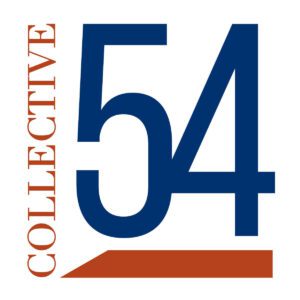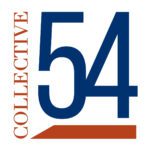Scaling a boutique takes money. This type of money is called scale capital. There are three primary sources of scale capital. Each has a set of advantages and disadvantages. Which is best for you is highly situational.
<iframe title=”Episode #13- A DIY Approach to Raising Growth Capital” src=”https://www.podbean.com/media/player/audio/postId/16039971?url=https%3A%2F%2Fwww.podbean.com%2Few%2Fpb-wzjdp-f4c023&version=1” width=”100%” height=”122″ style=”border:none;” scrolling=”no” data-name=”pd-iframe-player”></iframe>
TRANSCRIPT
Sean Magennis [00:00:15] Welcome to the Boutique with Capital 54, a podcast for owners of professional services firms. My goal with this show is to help you grow scale and sell your firm at the right time for the right price and on the right terms. I’m Sean Magennis, CEO of Capital 54 and your host. On this episode, I will make the case to scale your firm requires capital, and that not all capital is the same. I’ll try to prove this theory by interviewing Greg Alexander, Capital 54’s founder and chief investment officer. Greg has been on both sides of this. While the owner-operator of consulting firm SBI, he raised capital and as chief investment officer of Capital 54, he invest capital into boutiques like yours. This makes him uniquely qualified to help boutique owners think through the need for capital during your scale stage. Greg, great to see you, and welcome.
Greg Alexander [00:01:25] Hey, pal. Good to be with you. I’m looking forward to our discussion today. By the end of the show, we will be reminded that it takes money to make money.
Sean Magennis [00:01:34] It sure does Greg, why don’t we start right there? Why do firms need capital when trying to scale?
Greg Alexander [00:01:41] So scaling usually means entering new markets, launching new service lines, adding more headcount and many other strategic initiatives. And these things take money.
Sean Magennis [00:01:52] Yes, I agree. And at the top of the show, I suggested that not all capital is the same. What sources of capital are available to boutique owners during the scale stage?
Greg Alexander [00:02:05] These days, capital is abundant and there are many kinds. You only have 10 minutes or so, therefore I would focus on a do it yourself approach, which has three types of capital. First, there is free cash flow from operations. This comes from increasing revenue and driving down costs using the spread to scale. I mean, why give it to the government in taxes. Number two is debt. It comes from banks and private lenders. There is a way to do this without mortgaging your soul. And third, we have equity partners. This is when an investor puts in cash in exchange for a piece of the action. Watch out for predators. But the right equity partner can add a lot in addition to capital.
Sean Magennis [00:02:52] This is simple enough. But what are the pros and cons of each of those?
Greg Alexander [00:02:58] Well, free cash flow from operations is the best. The reason this is the best is because it’s cheap and in unlimited supply for well-run boutiques scaling with free cash flow. Preserve the preserves the owners equity. It does not add a debt service burden to the peno in the best of the best boutiques. Know how to allocate intelligently, which acts as a flywheel throwing off more and more of this free cash flow. There are some disadvantages to relying on free cash flow to scale.
Greg Alexander [00:03:34] For instance, instead of putting the free cash back into the business to fund scale, many owners pull it out of the business and pay themselves. This retards growth and adds years to the firm’s timeline toward an eventual exit. This is a difficult temptation to resist. Debt is the next best alternative to free cash flow. In my view, it is not cheap, but it is reasonable as lenders charge modest rates and loans to boutiques and it is also readily available in the two to three times, even arrange the negatives to debt are obvious. But let me quickly point them out. It does add an expense to the PNL as a loan payments need to be made. This will reduce the owner’s income. However, it does preserve the owner’s equity. So this can balance out over time. Unfortunately, young firms cannot secure it unless they personally guaranteed a loan. In some cases, this still does not work because the owner’s personal assets are not enough to act as collateral. Lastly, there is taking on an equity partner. This is cheap in the short term, but expensive in the long term. There is no loan payment to be made, meaning more cash is available. However, the owners stake in the firm is diluted as the equity partner is taking a piece of the business. And when an owner of a boutique sells, the equity partner gets his piece of the pie.
Greg Alexander [00:05:08] And one more thing. It is difficult for a processor firm to attract an equity investor. Many equity investors simply do not invest in people driven businesses. So it is in short supply. But that was a lot. Let me stop talking here.
Sean Magennis [00:05:24] Greg, this is excellent. How about sharing a little from your personal journey to to make sense of this?
Greg Alexander [00:05:31] Sure. So my firm, SBI, used free cash flow from operations as its source of scale capital. In retrospect, this was a mistake. It took 11 years to start scale and sell my firm. If I had taken on some debt, I think I could have cut this time in half. We were able to deploy capital effectively. Each investment resulted in more clients and each initiative resulted in lower costs. More capital would have resulted in even more clients and even lower costs. During my run, the cost of debt was much lower than the return we were generating. I will say, however, I am grateful I did not take on an equity partner. We were able to sell for nine figures. If I had taken on an equity partner, my share of the price would have been much less and I would have had sellers regret.
Sean Magennis [00:06:26] That’s a great personal example Greg. Thank you for bringing this to life. Well, I can’t think of a more important strategic decision for our listeners to get right. This one comes with very high stakes.
Sean Magennis [00:06:43] And now a word from our sponsor. Collective 54, Collective 54 is a membership organization for owners of professional services firms. Members join to work with their industry peers to grow scale and someday sell live firms at the right time for the right price and on the right terms. Let us meet one of the collective 54 members.
Matt Rosen [00:07:09] Hello. My name is Matt Rosen and I’m the founder and CEO of Allata. Allata serves large enterprise clients in the financial services, healthcare, retail distribution and professional services spaces. Our clients are centered around our offices in Dallas, Phoenix, Provo and Boise. Clients like the Frieman companies and brinks some security turn to us for help with strategic initiatives in the business and digital transformation space, typically creating new revenue streams, building seamless customer experiences and streamlining operations. We help with these initiatives by building digital strategies and roadmaps, assisting with enterprise architecture and design, working with data as an asset and customer, developing solutions which help our clients reach their strategic objectives. If you ever need help with digital strategy data and customer development initiatives, please reach out to me at www.allata.com Or [email protected]. Thank you.
Sean Magennis [00:07:57] If you are trying to grow scale or sell your firm and feel you would benefit from being a part of a community of peers, visit Collective54.com.
Sean Magennis [00:08:13] So this takes us to the end of this episode. And as is customary, we end each show with a tool. We do so because this allows the listener to apply the lessons to his or her firm, our preferred tool as a checklist. And our style of checklist is a yes, no questionnaire. We aim to keep it simple by asking only 10 questions. In this instance, if you answer yes to eight or more of these questions, all three of these capital sources are available to you. If you want to know to questions one to three, do not pursue funding scale with free cash flow. If you answer no to questions, four through nine do not rely on debt to fund scale. If you answer no question, 10 do not take on an equity partner. Get it, Greg?
Greg Alexander [00:09:06] I got it.
Sean Magennis [00:09:07] So let’s begin. Number one, are you generating enough free cash flow to fund scale? Number two, do you know where to deploy this extra free cash flow? Number three, are you willing to go without today for scale, tomorrow? Number four, have you been in business for at least five years? Number five, are you generating stable EBITDA every year? Number six, Would two to three times EBITDA be enough to fund scaling your firm? Number seven, can your PNL handled a debt service burden of a loan? Number eight, are you willing to personally guarantee a loan? Number nine, do you have enough personal assets to secure the loan, if you’re open to a guarantee? And number ten, are you willing to dilute your ownership take for the right equity partner?
Sean Magennis [00:10:26] In summary, it takes money to make money. Scaling a boutique takes money. There are different funding sources, each with their own pros and cons, all work well. Which is best for you is highly situational. Take your time to consider this very important strategic decision.
Sean Magennis [00:10:51] If you enjoyed the show and want to learn more, pick up a copy of Greg Alexander’s book titled The Boutique How to Start Scale and Sell a Professional Services Firm. I’m Sean Magennis. Thank you for listening.


